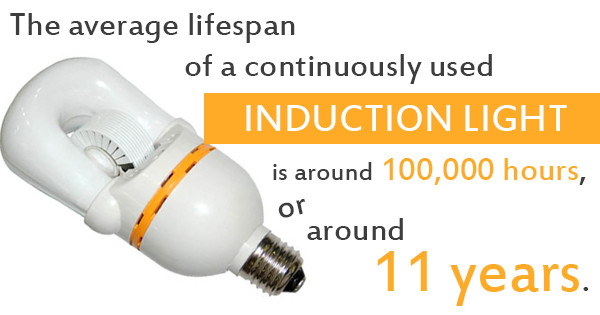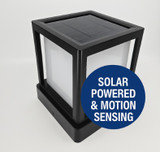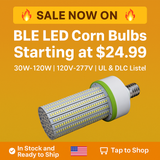Induction vs LED: The Environmentally Friendly Design of Induction Lighting
Induction lighting has only come into common use recently, but its unique technology is making waves. Think of the long-term demand on sports field and parking garage lighting, or the number of warehouse lighting fixtures that are needed for those large spaces. We have used inefficient and wasteful bulbs in these fixtures for decades, but options like induction are making light bigger, brighter, and better for the environment. Here's why induction design is at the forefront of green lighting tech.
It's Long-Lasting and Durable
What usually causes light bulbs to die are the inner filaments or electrodes burning out. Induction lighting has no internal filaments or electrodes, so it lasts for an extremely long time. While LED lighting has a long lifespan, especially when compared to traditional incandescent lighting, more people are waking up to the unique benefits of long-lasting induction lighting. When it comes to the induction vs LED debate, induction lighting deserves a second look.
The average lifespan of a continuously used induction light is around 100,000 hours, or around 11 years. And that's when the light is on 24/7.
It's Energy Efficient
Induction lighting's revolutionary technology also makes it incredibly energy efficient. It has high efficacy, often outputting as much as or more than 60 or 70 lumens per watt. The high brightness to low energy consumption ratio means businesses and buildings who use induction lighting get great bang for their buck, often spending less monthly on their electricity bill than they would have with many alternative lighting choices. Less energy use also means less consumption of fossil fuels for the environmentally-minded.
It's Safer Than You Think To Dispose Of
Although induction bulbs can last quite a long time, they are bound to burn out someday. If you do have a defective or old induction bulb, the good news is that it isn't very difficult to dispose of. The majority of induction bulbs do contain a small amount of mercury but it's in a solid state, not quite akin to the non-solid mercury in compact fluorescent bulbs. As long as you practice company policies for safe removal (including not touching the mercury directly, and only handling it with materials and tools you will promptly dispose of), you and everyone else will be perfectly safe. That mercury CAN be dangerous to the environment when not disposed of properly, so be sure you are giving old bulbs to stores or recycling programs in your area that accept them, not dumping them into your everyday waste.
Induction lighting is only in its early growing stages, yet Mr. Nikola Tesla gave us the base invention of the induction light over a century ago. Today, we're still integrating it with modern technology like solar panels. Who knows where induction lighting will go next?
Recent Posts
-
How Long Will Solar Powered Lighting Operate in the Rain?
How Solar Light Fixtures Can Run for 10 Rainy Days If you’ve ever wondered how a Commercial solar li …Jul 30th 2025 -
Spotlight - The IL-SPG54 Smart Solar Walkway Light: Where Performance Meets Simplicity
Introducing the IL-SPG54 Smart Solar Walkway Light: Where Performance Meets Simplicity When it comes …Jun 16th 2025 -
Corn Bulb Sale - While supplies last!
⚡ Limited Time Sale – BLE Series Corn Lamps Starting at $24.99! Stock up now while supplies last – p …Jun 11th 2025






